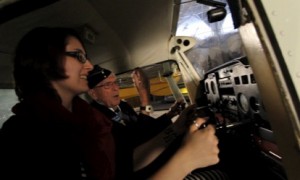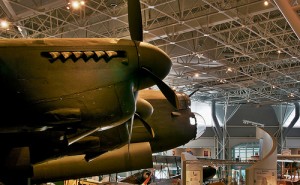Adventures in crowdfunding: A museum's perspective
18 December 2014 – Ciara Cronin
From art museums collecting Instagram posts for mobile photography exhibits to natural history museums getting visitors to actively participate in digitizing their collections or museums using crowdfunding sites like Kickstarter, Indiegogo, and Causevox to raise funds for special projects and exhibits, crowdsourcing is becoming increasingly prevalent in heritage and cultural institutions. Crowdfunding, which has been defined as “asking many people for ‘microdonations’ for a specific project or cause, usually within a specific time frame and online,” differs from traditional donor campaigns in that it is equal parts marketing, audience engagement, and of course, fundraising.
There are currently several examples of museums and cultural institutions using crowdfunding with varying degrees of success. One of the most oft-cited case studies is the Tesla Science Center at Wardenclyffe, in which Internet cartoonist Matthew Inman catalyzed a campaign that quickly and unexpectedly raised over a million dollars for a small, virtually unknown museum (see the History@Work story on the campaign here). Another well-known example is the Smithsonian Arthur M. Sackler Gallery’s “Together We Are One” Campaign in 2013, which raised $176,000 for its “Art of Yoga” exhibition. The campaign was a success due in part to a corporate sponsor (Whole Foods) providing matching funds and an extensive network of ‘Yoga Messengers’ across the country who shared the donation page with yoga enthusiasts from coast to coast. In Canada, Science World British Columbia also ran a successful campaign through Indiegogo in 2013, raising $16,000 for their “AMPED-Science of Music” exhibition. Their campaign relied on donor “perks” or incentives related to the local music scene in Vancouver to drive donations.

Student videographer Sophie Saumure is shown how to operate cockpit instruments by John R. Newel, a former instructor in the British Commonwealth Air Training Plan during the Second World War. Photo credit: CASM
The Canada Aviation and Space Museum (CASM) in Ottawa, Ontario, recently launched its first ever crowdfunding campaign for The Legacy Project, a documentary being created by Canadian film students and the museum. Through first-person accounts from Canadian veterans–airmen and women who served in the RCAF (Royal Canadian Air Force), RAF (Royal Air Force), WAAF (Women’s Auxiliary Air Force), and the Polish Air Force–as well as from former European civilians, the documentary will showcase the people and stories of the Second World War through the lens of aviation. What began as an oral history project has transformed into a documentary that also includes the personal impact these stories have had on the students who have been involved in the production of the film. Formatted in five separate segments, the documentary will be viewable as a whole or in parts. Upon completion, these segments, along with classroom resources, will be available for download by schools across Canada.
Funding is required to complete editing, transcription, translation, and dubbing and to secure the necessary copyright for music and images. So CASM staff decided to test out the crowdfunding platform Indiegogo to raise $35,000 for post-production costs. Indiegogo was chosen over other crowdfunding sites as it provides a “flexible funding” model wherein projects keep any of the funds raised, regardless of whether they reach their goal (which differs from the “all or nothing” model employed by Kickstarter and some other sites).
In preparing the promotions for the campaign, CASM staff spoke with the organizer of the Smithsonian’s “Together We Are One” campaign to learn from their best practices. Their number one donation-driver was email communications, so this campaign was built around a targeted email drive to partner networks across Canada. CASM is currently working with partners, such as the Military Family Resource Centre, Air Cadets, Canada Aviation Historical Society, and the Canadian Owners and Pilots Association, to spread the word through their extensive email lists. Staff are also promoting the campaign online through social media (Facebook and Twitter), Google Adwords, and with pages on the Canada Science and Technology Museums Corporation Foundation and the museum’s website. In addition to email and online promotion, staff have set up video stations on the floor of the museum, and visitors can add a donation to the campaign onsite at the museum’s admissions desk or boutique. The campaign also received a boost with the announcement of matching funds from CASM’s partner, Vintage Wings of Canada.
Currently, this campaign has raised $10,389 towards the goal of $35,000 goal, with just over a week to go. We will report back in a few months with an update on the final results of the campaign.
~ Ciara Cronin is Special Projects Officer at the Canada Science and Technology Museums Corporation. Questions about this project can be directed to [email protected].




